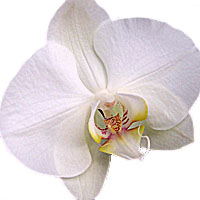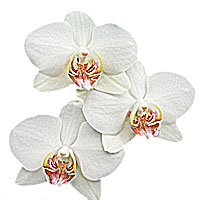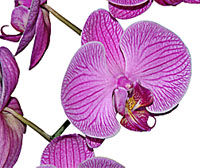Joints exercises Tutorial
Qigong Warm Up Routine: Healthy Joints
Online tutorial covering Qigong Warm Up Exercise Illustrated Stretching Exercises.
Qigong Warm Up Routine: Introduction

You can find exercises from this set in many places, all around the world. Athletes use them in Europe and USA. Chinese Qigong students do them as a warm up routine. Aikido schools in Japan use them, and even yoga people do some of them. So we can assume, that it is powerful.
Yet, if you visit rehabilitation clinics, you might discover, to your surprise, that these same techniques are used to bring people back to normal productive life. So we can assume, that it is easy to do.
In our society, we are used to think, that "powerful remedy must be expensive, complex and hard to apply". I saw people, who would refuse to do Tai Chi or Qigong, using this as a reason. Too simple, cannot be true. It can.
The power of Chinese (this set of exercises may look familiar, but it is taken almost without changes from the Qigong Warm Up Routine) philosophy is in its balanced simplicity. You do a simple set of movements, day after day, you don't even break to sweat - and than the changes happen. And of course, if you don't do it - it does not work. Well... no technique is perfect.
There is a little secret in these exercises. It is not obvious, especially if you do it by the book, so the teacher cannot come and help you. Here it is: it is not a sport.
Our life is full of stress. Just another "common knowledge", something we all know, but never think about. I first stopped to think about the "stress" part, when my teacher said something that was totally against all I believed in. "Any negative emotion goes directly to your back".
Think about it. By that time I had a lot of problems with my back, and I was blaming my diet, my genes, and environment... But my EMOTIONS? What does it mean - "goes directly to your back?"
It means (leaving aside all kinds of metaphysical explanations), that when we have the negative emotion - our back muscles - the little ones that we have around our vertebrae - go to spasm. And if the emotion persists - the spasm persists, too. And then it becomes our "normal" condition. Should I mention, that our back is involved to most of our health problems? I think not, as this is another "common knowledge".
If you don't like the "spasm" explanation, here is another one. The stress means adrenaline, which is produced by a little gland located on top of our kidney. And it is affecting our kidneys. And the energy meridian of the kidneys goes near the backbone. Different explanation. Same conclusion.
We don't need stress. We need to get rid of negative emotions WHATEVER it takes. When you think "I am so angry at him"... It is not "him" that is getting hurt - it is your back. Think about it.
Now back to the little secret of our exercises. It is not a sport. We do stretching and it sure makes our joints and ligaments happy. But we do it in a very relaxed way. No pain. No pushing it to the limit and a bit further. It is not a sport. It is not a competition. It is even more difficult, when you do it in a group, as our "herd instinct" makes us compete. She can bend forward one inch further - I have to do the same... No, you don't.
If you do it right, you will learn to relax. And then all the stress will be gone - at least ideally it should. Remember, that it is a Qigong Warm Up Routine, and Qigong (and Tai Chi) is among the most "relaxing" techniques on the face of this planet. And by learning to relax physically, you will some day (especially if you continue to Qigong and Tai Chi) learn to relax mentally. Which is a huge step towards achieving the physical health. Because "Any negative emotion goes directly to your back".
Joints exercises Tutorial: Introduction 2

It is a common knowledge that exercises make us stronger. I am not even going to talk about it. "If you want to become an athlete, you need to exercise". True. However...
How many people ever tried to continue this simple logical chain to it's simple conclusion? Let's do it. "If you don't exercise, you will become...ill? dead?" You will. Sooner or later. It is a common knowledge, too, but people don't like it somehow.
The good news: you don't need to dedicate all your free time to pushups and weight lifting. As the matter of fact, we can avoid pushups and weightlifting altogether, and still keep our precious health at the reasonable level.
This eBook gives you an exact set of exercises that can do the job.
The "natural process of getting older" can be slowed down and
to some extent reversed by doing these simple exercises.
If you are 7 years old, they will help you to grow healthier,
without all these modern deceases, like osteochondrosis and scoliosis.
If you are 20, it will help you to NOT "move like a duck" -
sometimes it makes a lot of difference, you know. Also, by the age
20 we (well, most of us) are working hard on the foundation of
our future health problems. It is not too late to change things.
If you are 40, you might notice, that your back is sore, or your
ulcer is affecting your diet more than you want, or your blood
pressure is "within the normal range for your age, near it's
upper limit"... You can heal some of your "problems", and reduce
the rest.
Finally, if you are 70, you still can make sure you feel great, and it is not that difficult to achieve.
Surprisingly, we don't need pushups and weight lifting to be healthy. Or, more accurate, we will do much better with pushups, but we can repair a lot of damage (that we are doing to ourselves) without the "heavy metal". Because...
Because it is not our muscles, that makes our body healthier and younger. It is our joints and ligaments. And it is possible to maintain them by simple exercises that are not physically challenging, not even for a 70 years old.
By the way...
It is safe, right? Then why should you read the disclaimer? Because there are still conditions, when you don't want to do gymnastics. No matter, how simple the exercises are, would you do them, if your heap is broken? Probably not. Now, would you do it, if you know, that your hip is NOT broken, but can break any moment? Many old people have this condition, it is called osteoporosis. Sometimes it is so severe, that they break their legs when they fall, actually, researches show, that their leg breaks BEFORE they fall - in some cases. A family doctor can help you to decide, if you should exercise or not.
What about young people? They are healthy, are they not? Mostly, but if, for example, you have certain back problems, you need to make sure that bending, twisting and stretching wouldn't hurt you. Again, as the disclaimer says, use your own judgment. Which means, ask your family doctor, if in doubts.
Joints exercises Tutorial: Qigong Warm Up Exercise

The following set of exercises is a framework. You can, if you want, to add your own exercises. Also, sometimes some exercises just "don't feel right" for some people. Please, remember this important rule, that you need to apply in this class, as well as in Tai Chi, Qigong, Yoga and generally - in any area of self-development. Here it is: if it is uncomfortable, don't do it. Especially, don't do particular exercises, if it hurts. It is not a competition, on the contrary, we are learning to relax. As it says in the disclaimer, use your own judgment. Sooner or later your body will change, and you will be able to do these "problem" techniques. And if not - don't worry, there are still plenty of exercises.
Illustrated Stretching Exercises: Sample
This is a sample chapter from the eBook (see below).
Grab the wrist, and massage it with circular motions.
The grasp must be strong, to make skin hot and the underlying joint massaged.

It is about time to mention an important moment. When I am talking about the "energy point", it is up to you to believe in this sort of things or not. The exercise will work even if you consider it a simple massage. However you need to do it with your full attention, and not mechanically, like some sort of aerobics. When you massage a wrist, you need to imagine your wrist getting healthier, and you need to welcome these changes. Same about all other exercises. It is very important to create an emotional feedback between your action and your goals.
If you do it, you will achieve the result with much less efforts, and if you don't... Well, you will achieve it too. But it will take more time.
If, however, you are doing Tai Chi Warm Up or Qigong Warm Up, the proper emotional state is absolutely necessary. At the beginning (in this eBook) it is a recommendation. At the advanced levels it is a must.
Stay straight with your feet at your shoulder width.
Keep feet parallel and knees slightly (just slightly) bent. With your hands to the sides at the shoulder level, turn your body to the side. Turn your head to look to the same side.

In Qigong (Chi Gun), the body position is set to allow "channels" to open, and to do it, we need to align our feet and shoulders (feet at the shoulder with). Also, we need to make sure our knees are slightly bent.
People, especially woman wearing high heels, have their back bent forward at the waist level. This deformation is normal, it is present in all humans, but very often, it is larger, than is physiologically necessary. By bending our knees (just a little, just to make sure they are not straight and locked), we make sure this deformation decreased to normal level.
From the point of view of Tai Chi, there is an additional reason to never stay on a straight leg - as Tai Chi is a martial art, and in a martial situation straight knee is a HUGE disadvantage, both from point of view of speed and vulnerability.
As with all our stretching exercises, we pull steady, without jerks and without pain.
From the initial position (straight, feet shoulder width apart) do a wide step to the right.
Keep your feet parallel, and most of your weight at the right foot. Also, make sure your back is straight and vertical.

Now turn tour body to the right, still keeping your back straight. You are looking to the right now, while your right knee still points forward. The left heel is not on the ground anymore, it is pointing up. This part is important, as we need to do two things in the same time. First, we keep our weight on the right foot. We DO NOT lean back on the left foot. Second, we pull our LEFT heel towards the floor, stretching the back of the left leg.
Finally, after we make sure the legs are in the right position, we turn even more, "looking behind our back". This way both the back side of our left leg and our back is stretched.

Return to the initial position and do the same exercise in the other direction.
